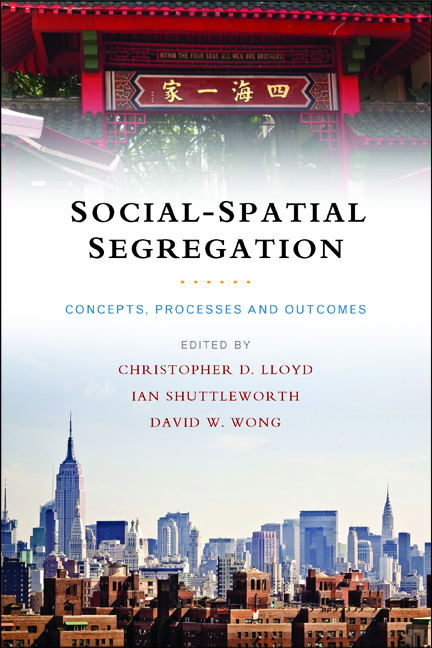two - Segregation matters, measurement matters
Published online by Cambridge University Press: 04 March 2022
Summary
There's many a difference quickly found
Between the different races.
But the only essential differential
Is living in different places.
(Ogden Nash)
Introduction
Segregation across neighbourhoods, schools and workplaces, by ethnicity, age, socioeconomic class and gender, for example, provides frequent material for political and social commentators – especially at times of social unrest when it (in particular residential and school segregation by ethnicity – school segregation is the focus of Richard Harris in Chapter Ten – and/or socioeconomic class – see Danny Dorling, Chapter Fifteen) is often presented as a causal factor underpinning that situation. It has also attracted a great deal of academic attention, across the social sciences and beyond, for many decades (Nightingale, 2012). Much of that attention has focused on the measurement of segregation, and the volume of work is not diminishing, more than half a century after the pioneering studies that established how segregated North American cities were. New ways of measuring this key concept are regularly proposed, capitalising on the increased availability of small-area data, developments in spatial statistics and rapid advances in computer power.
Despite that wealth of literature, in 1998 we inaugurated research that was to add to it, proposing new ways of measuring (ethnic) residential segregation in a range of societies where some form of multiculturalism was established. The work focused on two linked arguments. The first was that the commonly deployed methods of measuring segregation are of limited value and disclose little of the detailed patterning that characterises contemporary urban residential mosaics – where diversity of neighbourhood ethnic composition is the norm. The second was that the idealised pattern that underpinned so much writing on this topic – the experience of African Americans and, to a lesser extent, other immigrant groups to US cities in the early to mid-20th century (on which see, for example, Peach, 2005; Johnston et al, 2006a) – is of only marginal relevance to the study of contemporary situations, within as well as beyond US cities (Johnston et al, 2002). It was clear that future research should focus on the degree and nature of ethnic mix not in a city as a whole, but in its various parts, as Johnston et al (2010a) emphasised.
- Type
- Chapter
- Information
- Social-Spatial SegregationConcepts, Processes and Outcomes, pp. 13 - 44Publisher: Bristol University PressPrint publication year: 2014
- 4
- Cited by

